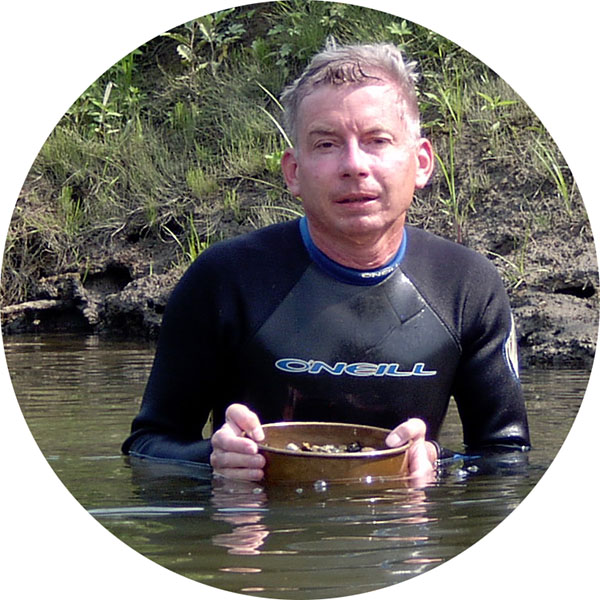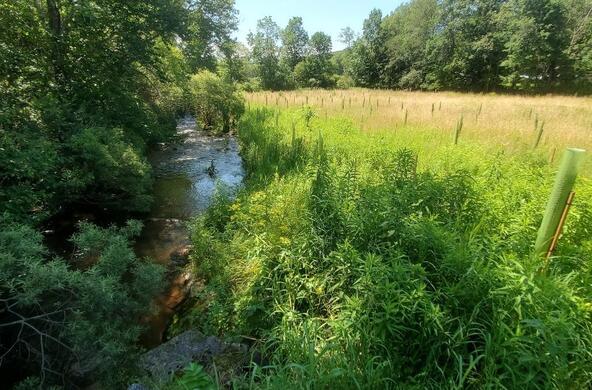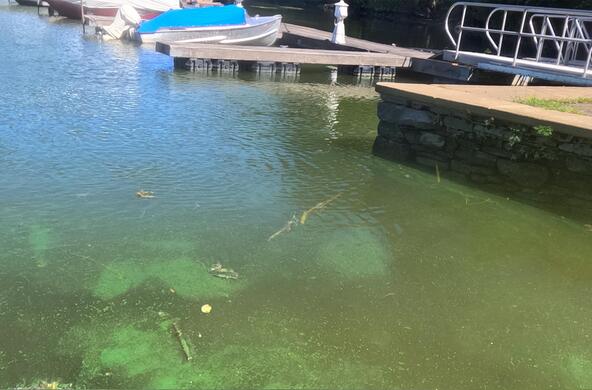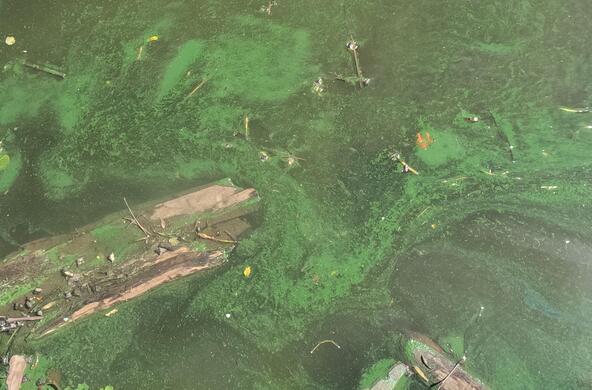Perhaps this summer’s most ironic story was the news that residents of Toledo, Ohio, a city on the shores of one of the largest and most magnificent lakes in the world, had no water to drink. For two days, half a million people in and around the city survived on bottled water because city water, drawn from Lake Erie, was too filled with toxins to be safe for drinking, cooking, or even bathing.
The toxins came from blue-green algae (also called cyanobacteria) that live in the lake. Among the many interesting things about blue-greens, and the most relevant here, is their ability to make a wide variety of strange and potent toxins.
Scientists are still debating what functions these toxins might perform for the algae (protection from being eaten? Nutrient storage? Protection from sunburn?), but they are undoubtedly poisonous to animals, including people. Some of these toxins, like the microcystin that fouled Toledo’s water, target the liver and can cause nausea, diarrhea, liver damage and perhaps even cancer. Microcystin is the toxin that is thought to have killed dozens of patients at a dialysis center in Brazil in 1996.
Other kinds of blue-greens produce poisons that target the kidney as well as the liver. These toxins are worrisome because one of the species that produces them, Cylindrospermopsis raciborskii, is an invasive species that is now spreading around the world.
Some blue-greens produce nerve poisons that are among the most potent known to science. It will perhaps suffice to say that one of these neurotoxins was known originally as Very Fast Death Factor when it was discovered in an investigation of livestock deaths in Canada and that the military has had a strong interest in these chemicals.
Finally, if that isn’t scary enough for you, blue-green algae produce BMAA, an amino acid that has been linked to neurodegenerative diseases such as Parkinson’s and ALS.
If blue-green algae are so common, and they make all of these poisons, could what happened to Toledo’s water supply happen elsewhere? It’s rare, but algal toxins have contaminated water supplies all around the world. Although blue-green algae are common, dense, toxin-producing growths of blue-green algae are far less common, and processes used in water treatment (flocculation of particles, chlorination, activated charcoal treatment) can remove most of these toxins. More frequent are deaths of livestock, waterfowl and dogs from drinking raw water from scummy lakes and ponds, with its full load of algae and toxins.
The problems in Toledo almost certainly arose because of the way that people have managed (or failed to manage) the lake and its surrounding landscape. Blue-green algae thrive in warm water that is rich in nutrients. Much of the land around Toledo is used to grow row crops and livestock. Runoff of nutrients from these operations, along with sewage from Toledo and Detroit, encourages the growth of these noxious algae during warm weather.
It is likely that problems with blue-green algal toxins in water supplies will become more common in the future, and we will read more stories like the one from Toledo. Already, many lakes and rivers, including Lake Erie and the Hudson River, are rich in nutrients from farm fertilizer, sewage and other sources, and we all know that the planet is warming. Studies done here at the Cary Institute show that the amount of blue-greens in the Hudson’s water rises from essentially zero in cool summers to more than half of all algae in warm summers, so we are probably looking at a more blue-green future for the Hudson and other waters around the world.
The news from Toledo reminds us how much we depend on the natural world for essential services and materials that support our lives and societies, including the very water that we drink. If we do not manage this natural world wisely, then we can expect to pay higher costs, whether measured as dollars spent to make our water safe to drink, or as human health.







